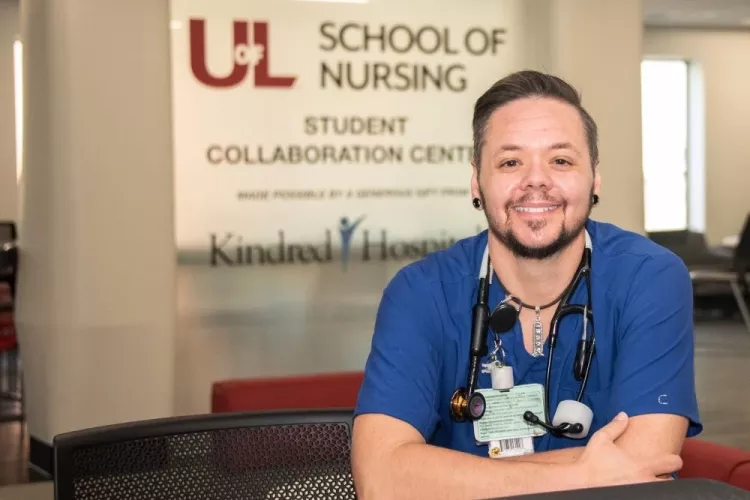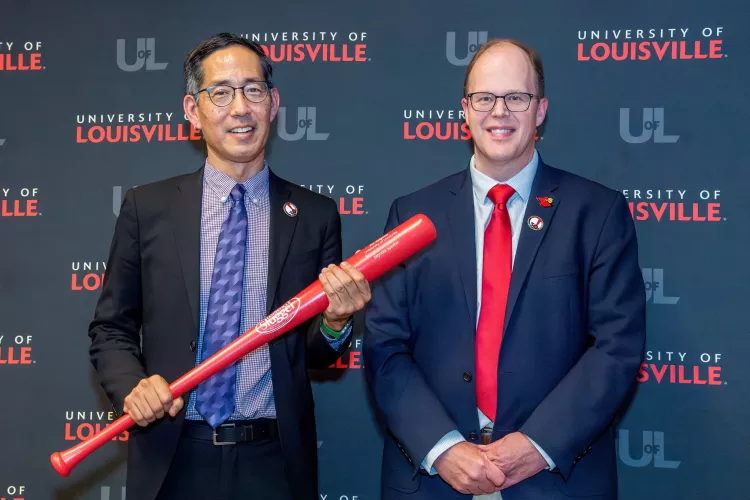UofL researchers discover key signaling protein for muscle growth that may enhance therapies for cancer, muscular dystrophy
October 2, 2024Researchers at UofL have discovered that a well-known protein, myeloid differentiation primary response gene 88 (MyD88), is a critical factor in the development and regeneration of muscles. Ashok Kumar, PhD, professor and distinguished university scholar in the Department of Anatomical Sciences and Neurobiology, led a team of researchers who have described the protein’s critical role in the growth and repair of skeletal muscles, both in post-natal development and in the regeneration of injured adult muscles.
UofL post-doctoral fellows Sajedah M. Hindi, PhD, and Yann S. Gallot, PhD, along with Jonghyun Shin, PhD, formerly of UofL and now with Yonsei University in South Korea, conducted the research in Kumar’s lab. It is published today in Nature Communications.
In the formation of muscle, specialized progenitor or stem cells multiply. They then differentiate into preliminary muscle cells called myoblasts. The myoblasts fuse together and subsequently form muscle fiber. Using animal models, the UofL researchers worked with both neonatal cells and adult cells to determine that MyD88, a key signaling protein in the human body, is required in sufficient quantity for myoblasts to fuse.
Hindi believes that MyD88 eventually may be used to improve the effectiveness of therapies using donor cells for the treatment of degenerative muscle disorders such as muscular dystrophies.
“Since MyD88 promotes only the fusion of myoblasts without affecting their proliferation or differentiation, enhancing the levels of MyD88 levels could be a means to enhance engraftment of exogenous myoblasts in cellular therapies,” Hindi said.
Kumar adds that increasing the expression of MyD88 could be used in the treatment of rhabdomyosarcomas, cancerous tumors that develop in skeletal muscles and often affect children.
“We are investigating whether augmenting the levels of MyD88 inhibits growth of rhabdomyosarcoma in animal models,” Kumar said. “Finally, we are investigating whether the loss of MyD88 is responsible for the diminished muscle regeneration capacity in the elderly.”
Research in Kumar’s lab focuses on understanding the molecular and signaling mechanisms that regulate the acquisition and maintenance of skeletal muscle mass. For the past eight years, they have been investigating the proximal signaling mechanisms that regulate skeletal muscle atrophy, regeneration and muscle hypertrophy, in addition to the signaling mechanisms that regulate self-renewal and differentiation of satellite cells in myogenic lineage.
In 2015, research from Kumar and Hindi published in the Journal of Clinical Investigation described the role of TNF receptor-associated factor 6 (TRAF6) in maintaining satellite cells and their ability to regenerate injured muscles. Just 10 days later, research from the lab published in Nature Communications revealed how the protein transforming growth factor-ß-activated kinase 1 (TAK1) is vital in the self-renewal of satellite stem cells.
Betty Coffman is a communications coordinator focused on research and innovation at UofL. A UofL alumna and Louisville native, she served as a writer and editor for local and national publications and as an account services coordinator and copywriter for marketing and design firms prior to joining UofL’s Office of Communications and Marketing.



